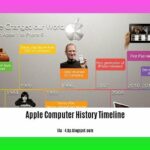Unveiling Apple’s Legacy: A Comprehensive Timeline of Innovation [apple company history timeline]. Join us as we chronicle the remarkable story of Apple, from its humble garage beginnings to its status as a global technology titan. From the visionary leadership of Steve Jobs to the groundbreaking products that transformed industries, this comprehensive timeline will take you on an immersive journey through the decades of innovation that have shaped the digital landscape. Prepare to be captivated as we explore the key moments, products, and milestones that have cemented Apple’s position as a true industry pioneer.
Key Takeaways:
- 1976: Apple was founded by Steve Jobs, Steve Wozniak, and Ronald Wayne, releasing the Apple I personal computer.
- 1977: Apple II was launched, designed by Steve Wozniak.
- 1980: Apple III was introduced but failed in the market; Apple became a publicly traded company.
- 1984: The Macintosh, the first computer with a graphical user interface (GUI), was introduced.
- 1991: Macintosh Portable, Apple’s first battery-powered computer, was released.
- 1997: Steve Jobs returned as Interim CEO, launching the “Think Different” campaign.
- 1998: The iMac, a colorful and sleek desktop computer, was introduced.
- 2001: Apple launched the iPod, a portable music player, and iTunes, a digital music store.
- 2007: The iPhone, a smartphone that revolutionized the mobile industry, was unveiled.
- 2010: The iPad, a tablet computer that popularized the category, was released.
- 2011: Steve Jobs resigned as CEO due to health issues; he passed away in October; Tim Cook became the new CEO.
- 2014: Apple launched the Apple Watch, a smartwatch that integrated with the iPhone.
- 2015: Apple became the first U.S. company to reach a market value of $700 billion.
- 2020: Apple announced Apple Silicon, its own processor for Mac computers.
Apple Company History Timeline
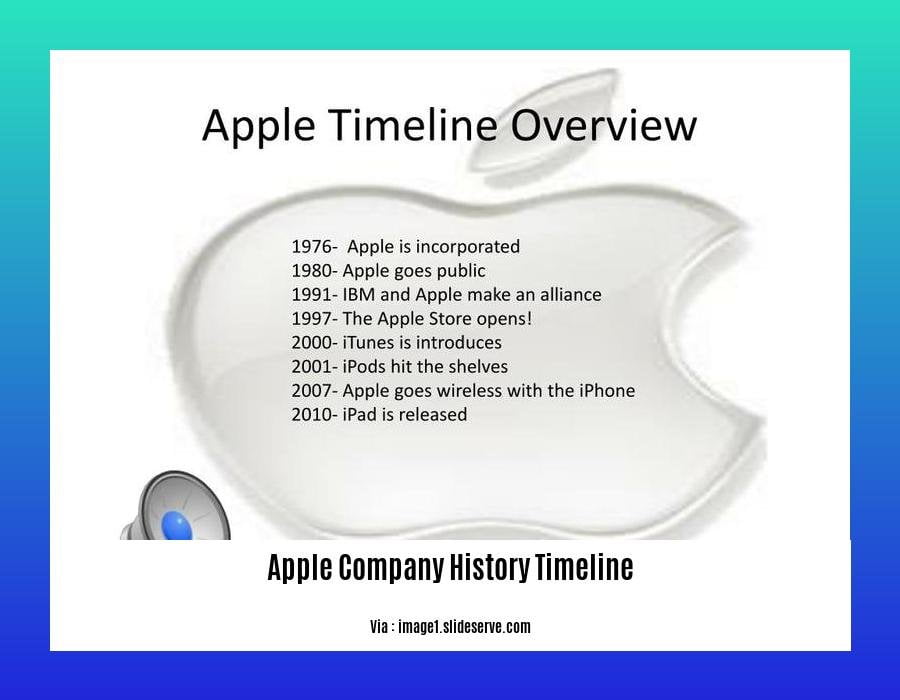
Pioneering the Digital Age: Apple’s Journey of Innovation
Apple’s tale is a testament to the transformative prowess of technology and the visionaries who dared to challenge the boundaries of what was possible. Since its humble beginnings in a Silicon Valley garage, Apple has revolutionized industries, reshaped communication, and redefined entertainment through its groundbreaking products. Join us as we trace the Apple company history timeline—a chronicle of ingenuity, disruption, and global impact.
A Chronology of Innovation:
- 1976: The seeds of greatness were sown when Steve Jobs, Steve Wozniak, and Ronald Wayne joined forces to establish Apple Computer, Inc. Their first creation, appropriately named the Apple I, was handcrafted by Wozniak and marked the beginning of their journey.
- 1977: The legendary Apple II, also designed by Wozniak, was unleashed upon the world, forever altering the landscape of personal computing. With its user-friendly interface and color graphics, it captivated consumers and laid the foundation for Apple’s future triumphs.
- 1980: Embracing the power of public investment, Apple took the bold step of going public, a move that propelled its growth and cemented its status as a global tech powerhouse. However, the revolutionary Apple III, released the same year, faced market challenges, demonstrating that even trailblazers can encounter setbacks.
- 1984: The dawn of a new era dawned with the introduction of the Macintosh, a revolutionary personal computer that introduced the world to the graphical user interface (GUI). Its user-centric design and intuitive interface set a new standard for human-computer interaction.
- 1991: Apple’s foray into portable computing began with the Macintosh Portable, the company’s first battery-powered computer. Its release marked a significant milestone in the evolution of mobile technology.
- 1997: Steve Jobs, the visionary behind Apple’s early successes, made a triumphant return as Interim CEO. Under his leadership, the company launched the iconic “Think Different” campaign, rekindling its spirit of innovation and setting the stage for a new era of growth.
- 1998: The iMac, an all-in-one desktop computer, burst onto the scene with its vibrant colors and sleek design. It became an instant hit, capturing the hearts of consumers and heralding Apple’s resurgence in the consumer electronics market.
- 2001: The iPod, a revolutionary portable music player, changed the way we consume music. Coupled with the iTunes digital music store, it created a comprehensive music ecosystem that transformed the industry.
- 2007: The iPhone, a groundbreaking smartphone, shattered the boundaries of mobile communication. Its intuitive touchscreen interface, coupled with its vast array of features, set a new standard for mobile devices, forever altering the way we stay connected.
- 2010: The iPad, a tablet computer that bridged the gap between smartphones and laptops, took the world by storm. Its large touchscreen display and versatile functionality made it an instant success, creating a new category of devices and redefining personal computing.
- 2011: In a bittersweet turn of events, Steve Jobs, the visionary leader who steered Apple to greatness, resigned as CEO due to health concerns. His passing in October of the same year left an irreplaceable void, but his legacy lived on, inspiring future generations of innovators.
- 2014: The Apple Watch, a smartwatch that seamlessly integrated with the iPhone, joined the Apple family, further expanding the company’s ecosystem of connected devices.
- 2015: Apple reached a historic milestone, becoming the first U.S. company to achieve a market valuation of $700 billion. This remarkable feat underscored the company’s enduring success and its position as a global technology leader.
- 2020: The quest for self-sufficiency led Apple to unveil the Apple Silicon, a custom-designed processor for Mac computers. This strategic move marked a significant shift towards greater control over the hardware and software components of its products.
As we reflect on this remarkable Apple company history timeline, it becomes evident that Apple’s success stems from its unwavering commitment to innovation, its ability to anticipate and fulfill consumer needs, and its relentless pursuit of excellence. From the humble beginnings in a garage to the global tech giant it is today, Apple’s journey serves as an inspiration to entrepreneurs, innovators, and anyone who dares to dream big and change the world with technology.
Looking to prepare for your AP European History exam? Check out our detailed AP European History Notes to gain a comprehensive understanding of the subject.
Explore the AP European History Timeline and delve into the historical events that shaped the course of European history from ancient civilizations to the modern era.
Uncover the fundamental AP US History Themes that have shaped the United States and gain insights into the events and ideas that have influenced American society.
Introduction of the Macintosh, the first commercially successful computer with a graphical user interface
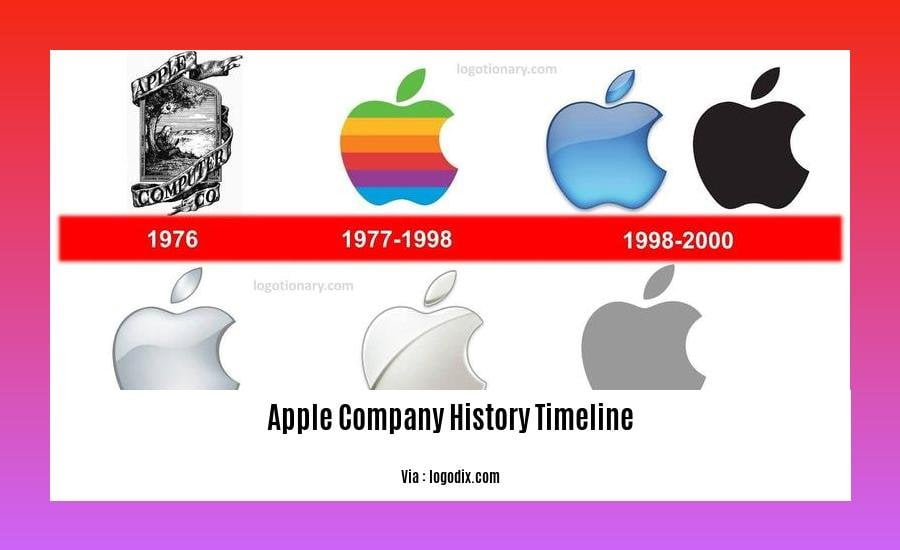
In 1984, Apple unleashed a technological marvel upon the world, forever altering the course of personal computing. The Macintosh, born from the vision of Jef Raskin, was more than just a machine; it was a revolution. It introduced the graphical user interface (GUI) to the masses, a paradigm shift that ushered in an era of intuitive computing.
The GUI, with its icons, windows, and pull-down menus, transformed the way people interacted with computers. No longer were they confined to cryptic command lines; now, they could navigate effortlessly using a mouse, pointing and clicking their way to their desired actions.
The Macintosh’s user-friendly design was a breath of fresh air in a computing landscape dominated by complexity and inaccessibility. It democratized computing, making it accessible to people from all walks of life, regardless of their technical expertise.
Key Takeaways:
- The Macintosh, introduced on January 24th, 1984, was a groundbreaking computer from Apple, notably being the first successful computer that allowed a user to interact using a graphical user interface (GUI) and a mouse.
- The brainchild of Jef Raskin, the Macintosh was designed to be user-friendly and accessible to the average person.
- Priced at $2,500, the Macintosh included applications such as MacPaint, which utilized the mouse, and MacWrite, showcasing WYSIWYG (What You See Is What You Get) word processing.
References:
- AppleInsider
- History-Computer
Release of the iPod, a portable media player that transformed the way people listened to music
Key Takeaways:
The iPod’s revolutionary design made it easier to store and listen to vast music collections on a portable device, liberating listeners from traditional home audio systems.
The iPod’s arrival in 2001 marked a turning point in the music industry, ushering in a new era of personal music experiences.
The iPod’s seamless synergy with iTunes created a formidable ecosystem that captivated the market, transforming Apple into a dominant force in the digital music landscape.
While touchscreen smartphones and music streaming services diminished the iPod’s prominence, its legacy remains etched in history as a groundbreaking device that reshaped how we listen to music.
In 2001, Apple unveiled its revolutionary music player, the iPod, a device that would forever change the way people experienced music. With its sleek design, intuitive interface, and ability to store a vast collection of songs, the iPod liberated listeners from bulky CD players and opened the door to a world of portable music. The seamless integration between the iPod and iTunes, Apple’s music management software, created a comprehensive ecosystem that captivated the market.
The iPod quickly became a cultural phenomenon, with its characteristic white earbuds and iconic silhouette synonymous with the digital music revolution. Its popularity soared as Apple introduced various models, catering to diverse needs and preferences. From the compact iPod mini to the feature-rich iPod touch, each iteration further cemented the iPod’s dominance in the market.
The iPod’s impact extended beyond its sales figures. It revolutionized the way people discovered and listened to music. With the ability to store thousands of songs in a pocket-sized device, users were no longer constrained by the limitations of physical media. The iPod made it possible to create personalized playlists, shuffle through entire libraries, and take one’s music collection anywhere, anytime.
The iPod’s success was not without challenges. The rise of touchscreen smartphones, particularly the iPhone with its built-in music app, marked the beginning of the iPod’s decline. Additionally, the emergence of music streaming services, driven by the convenience and accessibility of cloud-based music, further eroded the demand for physical music players like the iPod.
Despite its eventual discontinuation in 2022, the iPod’s legacy remains unchallenged. It transformed the music industry, paved the way for the digital music era, and established Apple as a leader in consumer electronics. The iPod’s impact continues to ripple through the tech world, inspiring countless innovations and shaping the way we experience music today.
Citations:
Launch of the iPhone: A Smartphone that Set a New Standard for Mobile Communication and Computing
Remember when our mobile phones were primarily used for making calls and sending text messages? Well, that all changed in 2007 when Apple introduced the world to the iPhone. This revolutionary device was not just a phone; it was a pocket-sized computer with internet capabilities, a music player, a camera, and more.
The development of the iPhone was a closely guarded secret at Apple. Steve Jobs and his team worked tirelessly for over two years to bring this groundbreaking device to life. The result was a sleek and stylish phone with a revolutionary user interface that was unlike anything else on the market.
On June 29, 2007, the iPhone was finally unveiled to the world. The response was overwhelming. People lined up for hours to get their hands on this revolutionary device. Within weeks, the iPhone became the must-have gadget, and it quickly changed the way people communicate, consume media, and access information.
Key Takeaways:
iPhone Revolution: The launch of the iPhone marked a turning point in the mobile phone industry. It redefined mobile communication by introducing new features like the touchscreen interface, high-resolution camera, and internet access.
Mobile Computing Pioneer: The iPhone blurred the lines between phones and computers. It enabled users to perform tasks that were previously only possible on desktop computers, such as browsing the web, checking email, and playing games.
App Store Ecosystem: The App Store, introduced alongside the iPhone, created a thriving ecosystem of apps that transformed the way people use their phones. With over 2 million apps available today, the App Store has revolutionized the mobile app industry.
Global Impact: The iPhone’s impact extended beyond the tech world. It had a profound impact on various industries, including music, photography, and gaming. It also influenced the way people interact with technology in their daily lives.
Sources:
[1] iPhone: The Complete History—and What’s Next | WIRED
FAQ
Q1: What was significant about the Macintosh introduced in 1984?
A1: The Macintosh was groundbreaking as the first successful computer with a graphical user interface (GUI) and mouse, making it more accessible to the average user.
Q2: How did the iPod impact the music industry?
A2: The iPod revolutionized music consumption by enabling users to store and listen to extensive music collections on a portable device, breaking away from traditional home stereo systems.
Q3: What led to the eventual decline of the iPod?
A3: The rise of touchscreen smartphones with built-in music apps, along with the popularity of music streaming services, contributed to the decline of physical music formats like the iPod.
Q4: What key feature did the iPhone introduce that set it apart from other mobile phones?
A4: The iPhone combined features such as a high-resolution Retina display, FaceTime video calling, and integration with various apps and services, setting a new standard for mobile devices.
Q5: How long did it take Apple to develop the iPhone before its initial release?
A5: The development of the iPhone spanned more than two years before its initial release in the United States in 2007, with subsequent releases in Europe in 2007 and Asia in 2008.
- Star Ring Trends: Etsy vs Amazon - March 28, 2025
- Boost Pollinator Habitats: Baby Blue Eyes Sustainable Farming Guide - March 28, 2025
- Protect Big Black Bears: Effective Conservation Strategies - March 28, 2025
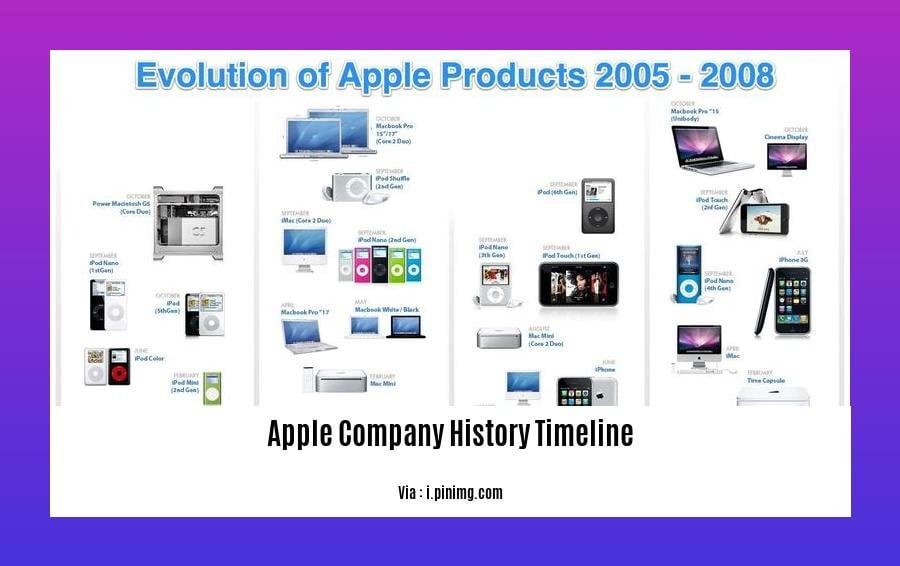
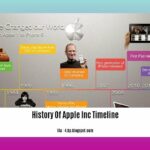
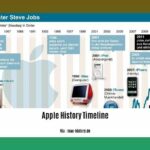
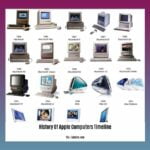

![The Evolution of the Apple Store: A Comprehensive Timeline of Retail Innovation [Apple Store History Timeline] apple-store-history-timeline_2](https://www.lolaapp.com/wp-content/uploads/2023/12/apple-store-history-timeline_2-150x150.jpg)
